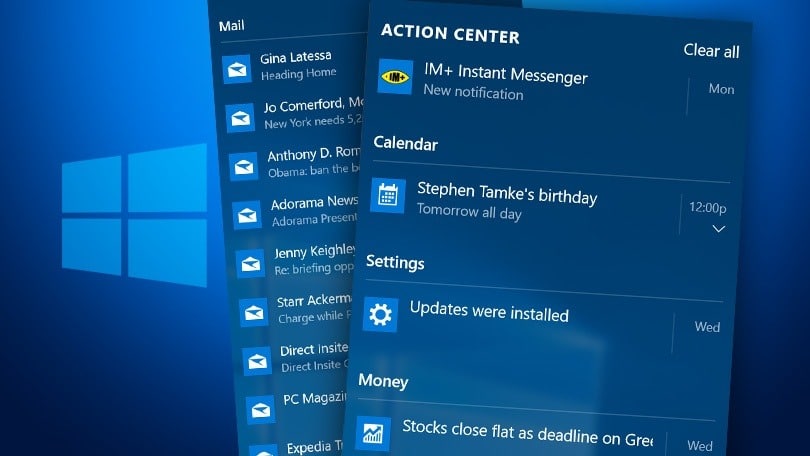For Windows 10users, Action Center is a single place to check notifications and quickly interact with some key settings. And it’s annoying when the Action Center doesn’t open or doesn’t work. For some, the Action Center doesn’t open when they click its icon, while for others, the Action Center window opens, but it’s blank. In the first case, the Start menu does not open either. If you are facing a similar issue related to Action Center, this post will help you.
The action center hosts quick actions and notifications on your computer. Read more about how to properly use the Action Center from our guide. We mentioned the basic solutions before. They should help you solve the problem. If not, move on to slightly advanced solutions. Let’s begin.
1. Restart your computer
Many users have been able to fix the Action Center not starting problem on their Windows 10 PC simply by restarting the computer. So try this simple solution before trying other things.
2. Open the action center correctly
The correct way to open Action Center is to click once on its icon in the system tray. It’s the icon that looks like a chat bubble at the far corner. Alternatively, use the Windows key + a keyboard shortcut to open Action Center.
3. Disable and reactivate the Action Center
Several times disabling a service and re-enabling it helps to solve the problems related to it. You should also try the Action Center.
Here are the steps:
Step 1- Open Windows settings and go to Personalization.
Step 2- Click on the taskbar. In the taskbar settings, click Turn system icons on or off.
Step 3- Turn off the switch next to Action Center. Wait a few seconds and then enable it again. Check if you are able to open Action Center now.
-
Customize the taskbar settings
Another similar solution is to reconfigure two other settings related to the taskbar. To do this, open Windows 10 Settings. You can use the Windows key + I keyboard shortcut to open Settings. Click Personalization. Go to the taskbar.
You need to reverse the options for “Auto-hide the taskbar in desktop mode” and Auto-hide the taskbar in tablet mode “. So if they are enabled, disable them and then enable them again. Similarly, if they are disabled, enable them followed by disabling them.
5. Restart the explorer
Restarting Windows Explorer from Task Manager proved to be a savior for many users. Right-click anywhere on the taskbar and select Task Manager.
If a small window opens, click More Details to open the expanded version of Task Manager.
On the Processes tab, look for Windows Explorer. Click on it and hit the Restart button at the bottom. The screen will momentarily go blank. Do not worry. It will go back to normal in seconds. When it becomes normal, try opening the Action Center. Hopefully, it works normally.
Tip- If Windows Explorer doesn’t open automatically, open Task Manager again. Click File> Run New Task. Type explorer.exe and hit the Enter button on your keyboard.
6. Check for Windows updates
Many times, the problem is with the recent Windows update. In such situations. Microsoft quickly releases an incremental update to fix the bug. So, take a look at the available Windows updates and install them quickly.
To check for updates, open Settings> Update & security. Click Check for Updates.
7. Register the action center again
Sometimes, due to Windows updates or some other reason, the files get corrupted. You need to re-register Action Center using Windows PowerShell. Here’s how to proceed.
Open Windows search or use Windows key + S shortcut to open search. Type PowerShell in the search. Right-click Windows PowerShell and select Run as administrator.
When the Windows PowerShell screen appears, copy and paste the following code and press Enter to run the command.
Get-AppxPackage | % {Add-AppxPackage -DisableDevelopmentMode -Register “$ ($ _. InstallLocation) \ AppxManifest.xml” -verbose}
When finished, restart your computer and check the Action Center to see if it works.
8. Run System File Checker
Finally, you should try using System File Checker to troubleshoot Windows function issues. You will run SFC and DISM scans on your PC using the command prompt. They will scan your computer for missing or damaged files and restore those files.
Open Windows Search and search for Command Prompt. Right-click on it and select Run as administrator. When the Command Prompt window appears, type sfc / scannow and press the Enter key on your keyboard. Wait for the scan to complete. Then close the command prompt and restart your computer.
After restarting your PC, select Action Center. If the problem persists, open Command Prompt again. Type the following commands and press the Enter key.
- DISM.exe / Online / Cleanup-image / Scanhealth
- DISM.exe / Online / Cleanup-image / Restorehealth
This scan may take approximately 15 minutes or more. Do not close the Command Prompt window during either scan.

